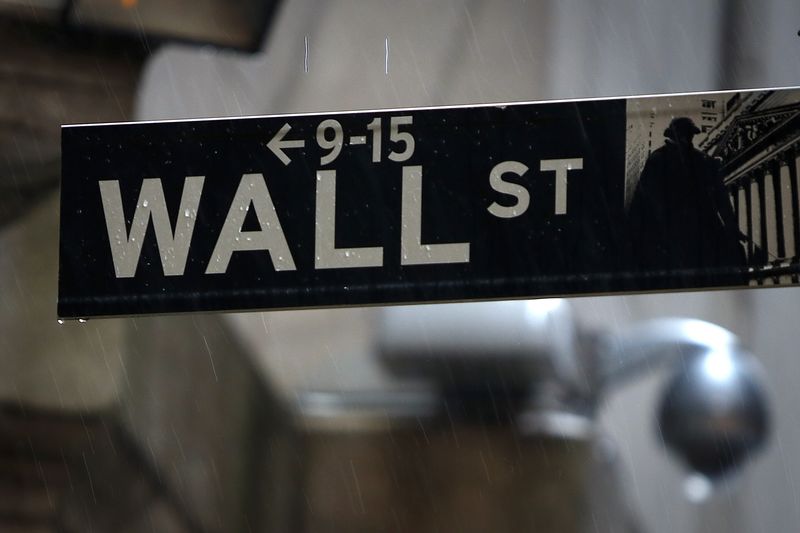Investing.com - Here are three things that flew under the radar this week
1. Debate Breaks out on Wall Street as VIX Hits Lows
For anyone looking to gauge how deep fear runs in markets, look no further than the VIX index or the “fear gauge.” In the current good times of record high equity markets, the fear gauge plummeted to more-than-one-year lows earlier this week, prompting debate on whether investors lack vigilance.
“The developments over the past weeks might support the usual narrative that investors are being complacent, and the idea that we could be in for another equity selloff,” said Hubert de Barochez, markets economist at Capital Economics, in a research note.
The CBOE Volatility Index closed at 11.54 on Tuesday. Its lowest level since Aug. 9, 2018.
The ongoing plunge in the VIX has recently stirred up debate on the next big move in markets.
Some say the fear gauge is likely to continue its decline and pave the way to yet more record highs in equities. But others see eerily similarities to a trend that unfolded last year that led to a major selloff.
At the end of September last year, stocks were flirting with highs. The VIX was toying with lows. And the good cheer on Wall Street was palpable.
But the VIX bottomed soon after. A jolt in volatility pierced through markets, and stocks suffered their biggest correction since the Financial Crisis.
With expectations growing that volatility may be on the cusp of getting a second lease of life, Evercore ISI strategist Dennis DeBusschere suggested it may be time for investors to seek shelter.
“Since the S&P is making new all-time highs, now is an opportune time to hedge,” DeBusschere said.
But some disagree.
Greg Boutle, U.S. head of equity and derivative strategy at BNP Paribas, told Bloomberg in an interview this week that he sees further signs of upside in the market as traders continue to bet on a further decline in VIX.
"We've seen the VIX break down on the downside through the 12 level and in terms of positioning, the number of people shorting the VIX is at a record, so the market is positioning for a risk-on move," Boutle said.
2. Competition Limits Price Hikes to Combat Tariffs
One question on the minds of many investors is how, with the current U.S. economic expansion, has inflation remained very tame.
And the regional reports in the Federal Reserve’s Beige Book show that businesses are finding themselves in an increasingly tricky situation on prices and rising input costs, especially on the retail side.
“Despite the reported softness in prices charged to consumers, firms' input costs continued to increase at a moderate rate,” the St. Louis Fed reported. “On net, 32% of business contacts reported higher nonlabor costs, the same share as in the previous quarter. Business contacts in retail and manufacturing reported facing increased price pressures due to tariffs.”
In the Atlanta Fed region “firms most affected by tariffs indicated they were more likely to pass along cost increases to customer.”
But whether companies were actually able to boost prices varied.
“On the consumer side, a clothing retailer reduced the use of price discounting to offset higher costs resulting from tariffs,” the Cleveland Fed said. “By contrast, a food retailer said that while tariffs had increased costs, the company ‘cannot raise prices on a whim’ because of fierce competition.”
Retail prices increased “modestly” in the Chicago Fed region.
“One contact said that food, home goods, and apparel retailers were struggling to pass on higher costs; in contrast, another contact noted that retailers continued to raise prices to reflect higher potential and realized tariffs,” it said.
On perk for tourist in New York for the Thanksgiving festivities – Broadway show ticket prices had declined modestly.
3. Silver Price Estimates Reined In
Silver prices will see a solid rise next year, but the gains won’t be as strong as originally thought, according to J.P. Morgan.
The investment bank sees a 10% year-over-year rise in silver for 2020, but that’s about 15% lower than its previous estimates as it become more optimistic on the global economy.
“On a quarterly basis, we now see silver prices peaking in 2Q20 at a quarterly average of around ($18.70)/oz before selling off lower towards a 4Q20 average around $17.1/oz, as the U.S. economy likely finds more solid footing later in the year,” J.P. Morgan said in its quarterly metals report, released this week.
Looking at supply and demand fundamentals, with J.P. Morgan’s “more constructive economic view for 2020,” it now sees industrial fabrication rising 1.5% year over year.
But “(e)ven with this relatively more optimistic industrial use view, we still see total fabrication demand largely remaining flat as the jewelry, silverware and photography segments all come under pressure next year,” it said.
“(W)e continue to think silver’s appeal as an alternative precious metal to gold will still be the major price driver, likely boosting silver prices in 1H20 before the precious fervor eases somewhat in 2H20,” J.P. Morgan added.
